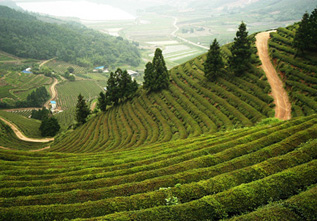The State Council's decision last week to suspend a massive forestation project was aimed at making some adjustments to the scheme, rather than in response to worries about food security, agriculture officials said yesterday.
They were responding to suggestions by experts that the move reflected policymakers' concerns that the forestation program was using up farmland.
"It is not a stop," Qin Yucai, an official from the State Council Office for Western Region Development, said during an online interview at www.gov.cn yesterday.
"The plan to return 1.3 million hectares of farmland to forest or grassland between 2006 and 2010 will not change. The country just needs to make a temporary amendment to the project's structure."
Wu Xiaosong, an official with the National Development and Reform Commission, said the experts' comments showed a lack of faith.
"Such suggestions actually express doubt about the country's policy," he said.
Wu said the bumper grain harvest over the past three years proves the project of returning arable land to forest has not affected food security.
Wu cited Wulanchabu in Inner Mongolia and Yan'an in Shaanxi Province as examples, saying efforts to reforest barren arable land in these regions had actually helped boost grain production.
Most of the arable land involved in the forestation project is threatened by desertification or located on slopes, which is not suitable for grain cultivation.
He said the forestation project had helped improve the environment and freed up resources to focus on quality farmland.
Qin said the project had not affected any productive grain land.
To continue the green drive of turning arable land into forest, the authorities will invest 201 billion yuan (US$26.45 billion) in such projects in the next eight years, raising the total financial input into greenery to 430 billion yuan.
The money will be used to provide subsidies to farmers and protect forests, which were considered top issues by policymakers.
The authorities launched the campaign to return farmland to forest in 2000.
By the end of last year, more than 9 million hectares of arable land had been turned into forest or grassland.
(China Daily September 20, 2007)


